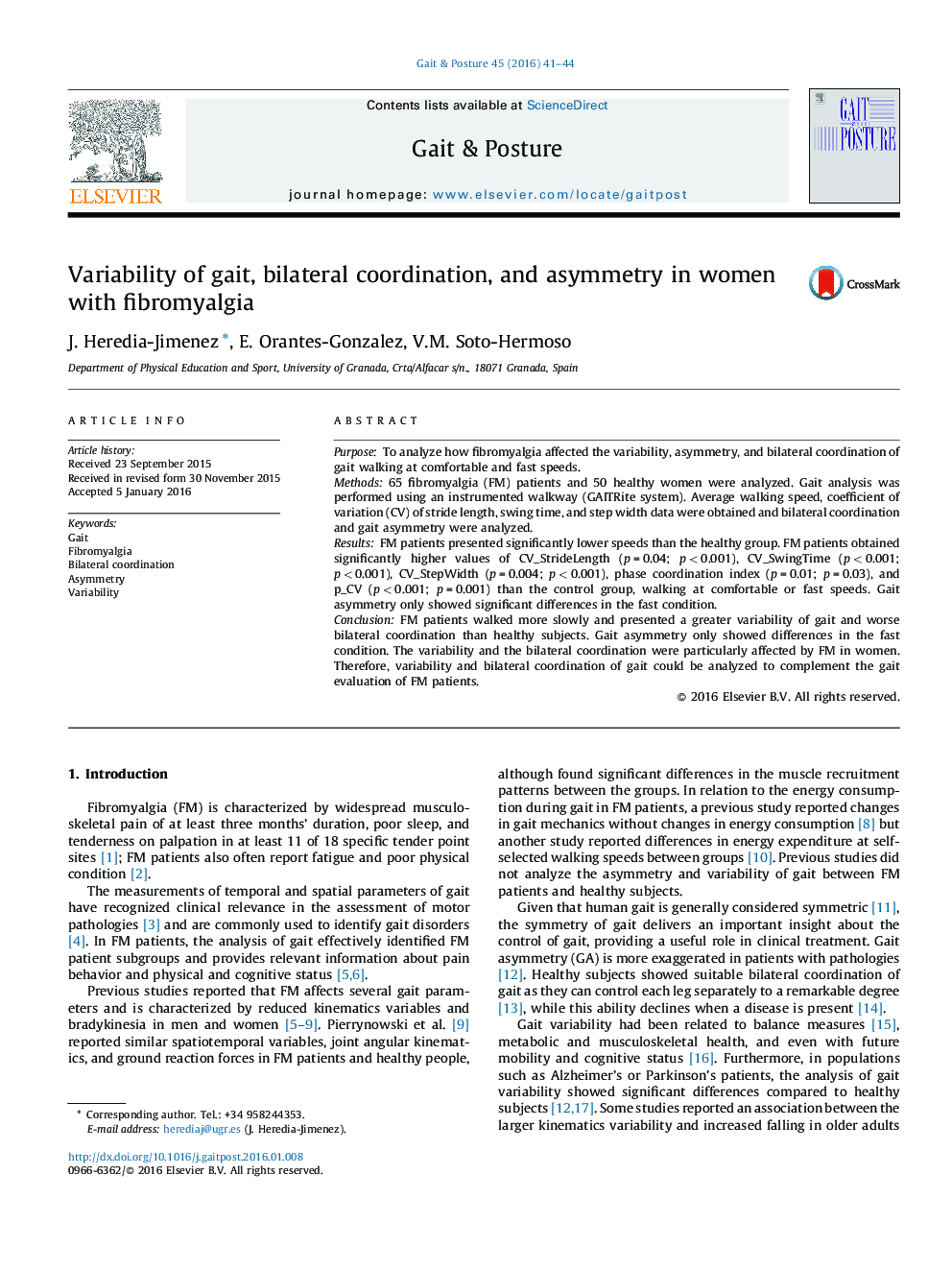| Article ID | Journal | Published Year | Pages | File Type |
|---|---|---|---|---|
| 4055981 | Gait & Posture | 2016 | 4 Pages |
•Gait variability, bilateral coordination, and asymmetry were analyzed in fibromyalgia women.•Gait was characterized by its variability and reflected fibromyalgia's gait coordination.•The fibromyalgia group showed more gait asymmetry when walking quickly.•The variability and the bilateral coordination could complement the evaluation of fibromyalgia symptoms.
PurposeTo analyze how fibromyalgia affected the variability, asymmetry, and bilateral coordination of gait walking at comfortable and fast speeds.Methods65 fibromyalgia (FM) patients and 50 healthy women were analyzed. Gait analysis was performed using an instrumented walkway (GAITRite system). Average walking speed, coefficient of variation (CV) of stride length, swing time, and step width data were obtained and bilateral coordination and gait asymmetry were analyzed.ResultsFM patients presented significantly lower speeds than the healthy group. FM patients obtained significantly higher values of CV_StrideLength (p = 0.04; p < 0.001), CV_SwingTime (p < 0.001; p < 0.001), CV_StepWidth (p = 0.004; p < 0.001), phase coordination index (p = 0.01; p = 0.03), and p_CV (p < 0.001; p = 0.001) than the control group, walking at comfortable or fast speeds. Gait asymmetry only showed significant differences in the fast condition.ConclusionFM patients walked more slowly and presented a greater variability of gait and worse bilateral coordination than healthy subjects. Gait asymmetry only showed differences in the fast condition. The variability and the bilateral coordination were particularly affected by FM in women. Therefore, variability and bilateral coordination of gait could be analyzed to complement the gait evaluation of FM patients.
